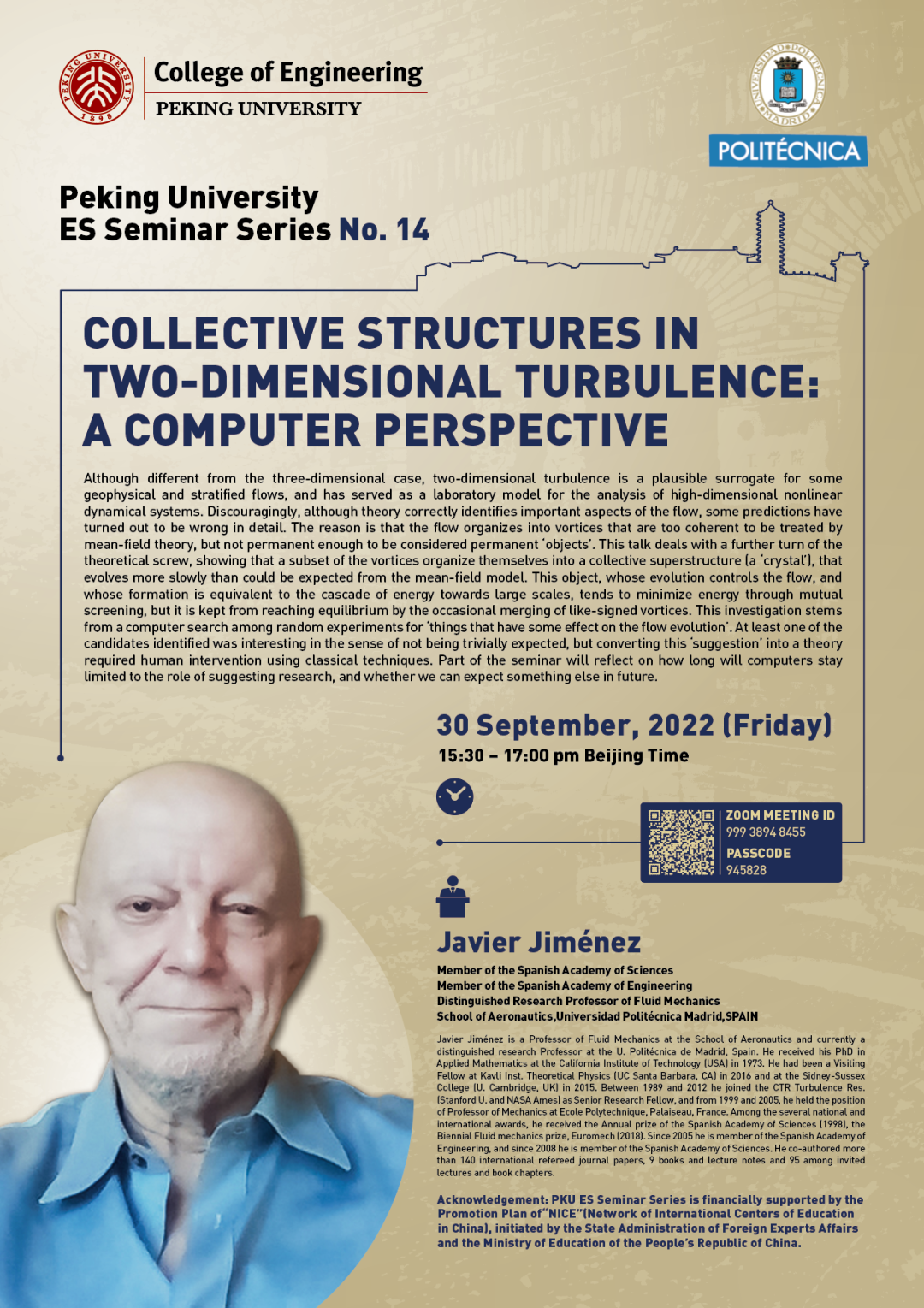Speaker: Javier Jiménez, Member of the Spanish Academy of Sciences, Member of the Spanish Academy of Engineering, Distinguished Research Professor of Fluid Mechanics, School of Aeronautics, Universidad Politécnica Madrid, SPAIN
Host: Prof. Tao Jianjun, College of Engineering, Peking University
Time: 15:30-17:00 pm, September 30, 2022, GMT+8
Venue: Zoom Meeting ID: 999 3894 8455 Passcode: 945828
Abstract:
Javier Jiménez is a Professor of Fluid Mechanics at the School of Aeronautics and currently a distinguished research Professor at the U. Politécnica de Madrid, Spain. He received his PhD in Applied Mathematics at the California Institute of Technology (USA) in 1973. He had been a Visiting Fellow at Kavli Inst. Theoretical Physics (UC Santa Barbara, CA) in 2016 and at the Sidney-Sussex College (U. Cambridge, UK) in 2015. Between 1989 and 2012 he joined the CTR Turbulence Res. (Stanford U. and NASA Ames) as Senior Research Fellow, and from 1999 and 2005, he held the position of Professor of Mechanics at Ecole Polytechnique, Palaiseau, France. Among the several national and international awards, he received the Annual prize of the Spanish Academy of Sciences (1998), the Biennial Fluid mechanics prize, Euromech (2018). Since 2005 he is member of the Spanish Academy of Engineering, and since 2008 he is member of the Spanish Academy of Sciences. He co-authored more than 140 international refereed journal papers, 9 books and lecture notes and 95 among invited lectures and book chapters.
Biography:
Although different from the three-dimensional case, two-dimensional turbulence is a plausible surrogate for some geophysical and stratified flows, and has served as a laboratory model for the analysis of high-dimensional nonlinear dynamical systems. Discouragingly, although theory correctly identifies important aspects of the flow, some predictions have turned out to be wrong in detail. The reason is that the flow organizes into vortices that are too coherent to be treated by mean-field theory, but not permanent enough to be considered permanent ‘objects’. This talk deals with a further turn of the theoretical screw, showing that a subset of the vortices organize themselves into a collective superstructure (a ‘crystal’), that evolves more slowly than could be expected from the mean-field model. This object, whose evolution controls the flow, and whose formation is equivalent to the cascade of energy towards large scales, tends to minimize energy through mutual screening, but it is kept from reaching equilibrium by the occasional merging of like-signed vortices. This investigation stems from a computer search among random experiments for ‘things that have some effect on the flow evolution’. At least one of the candidates identified was interesting in the sense of not being trivially expected, but converting this ‘suggestion’ into a theory required human intervention using classical techniques. Part of the seminar will reflect on how long will computers stay limited to the role of suggesting research, and whether we can expect something else in future.
Source: College of Engineering
